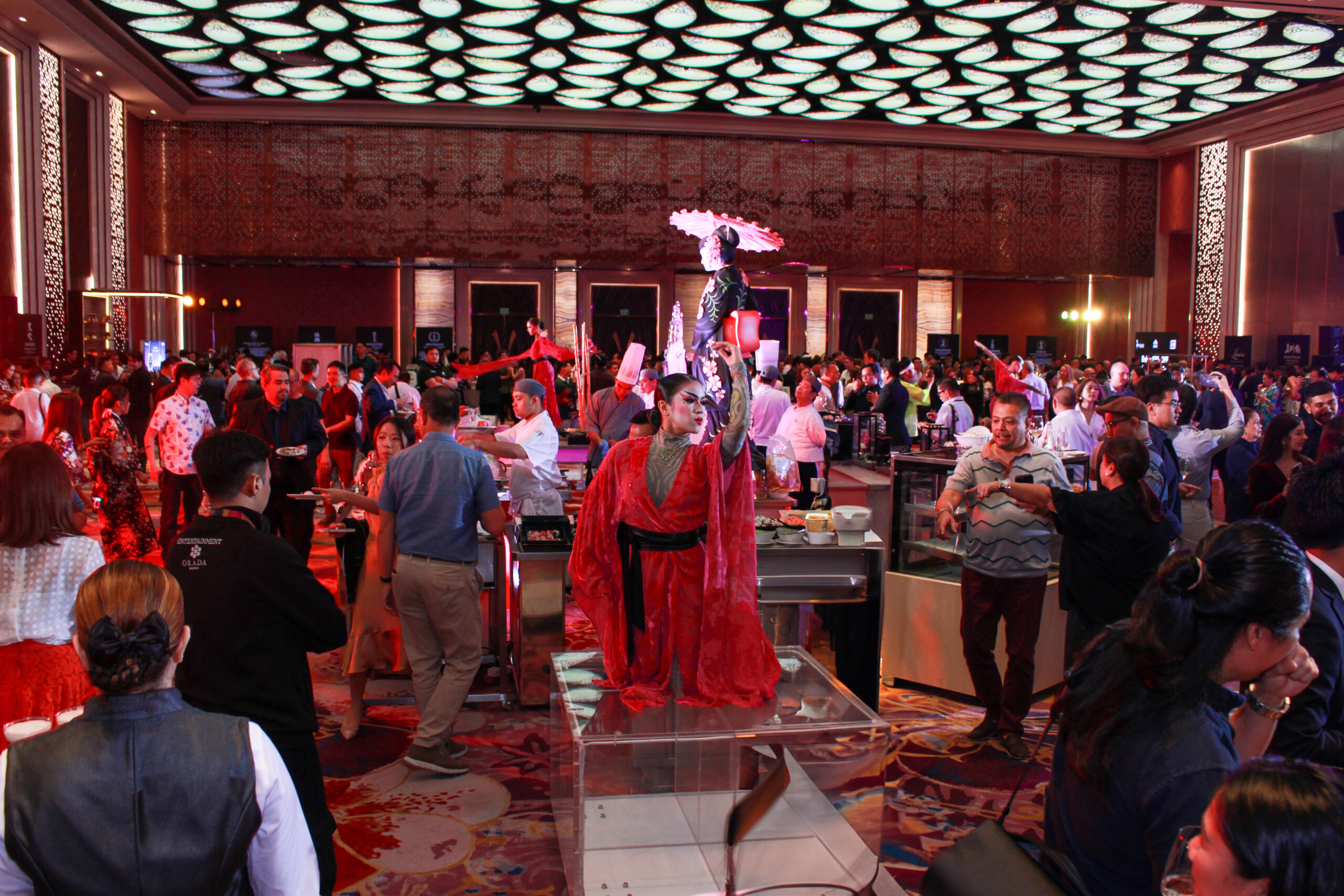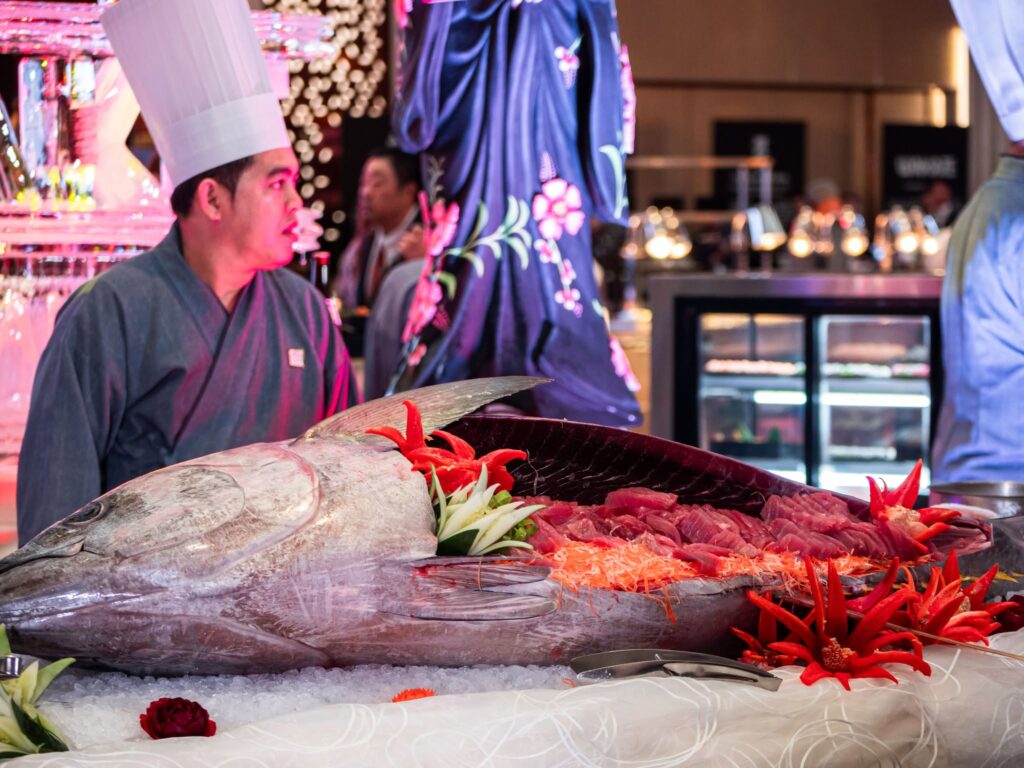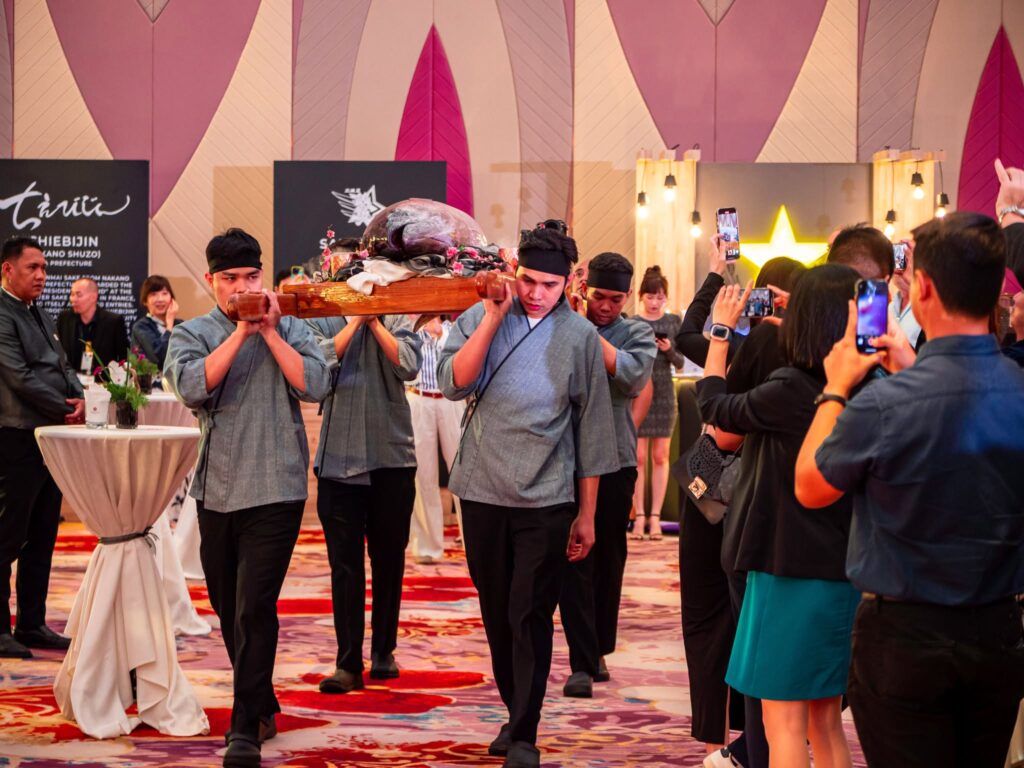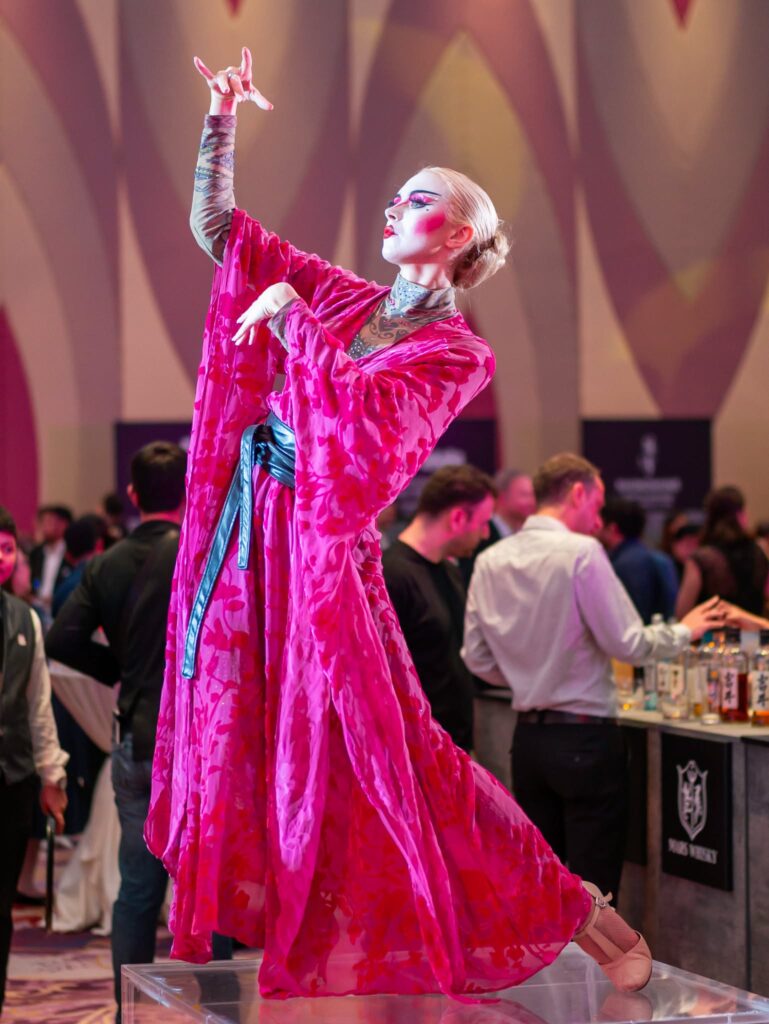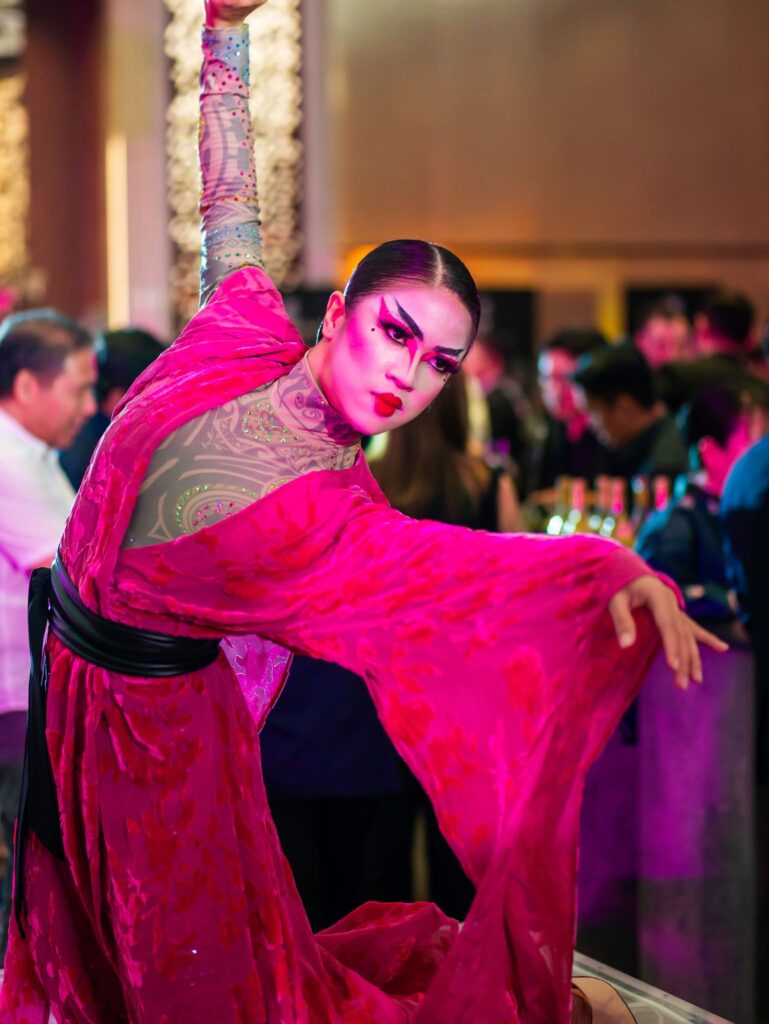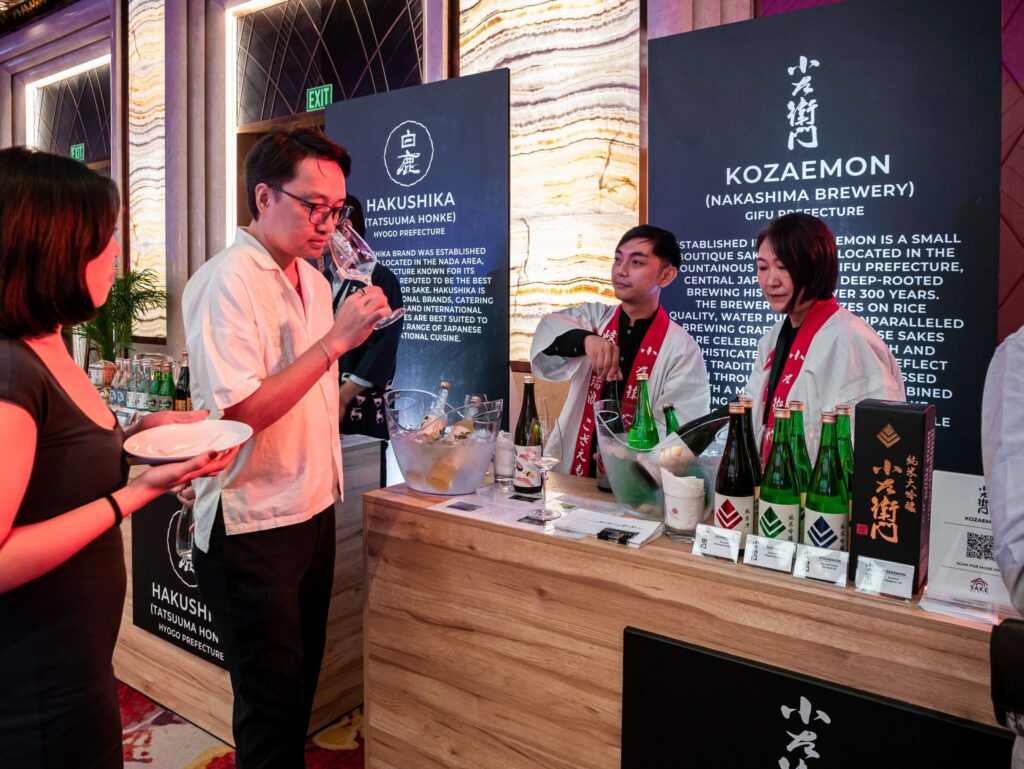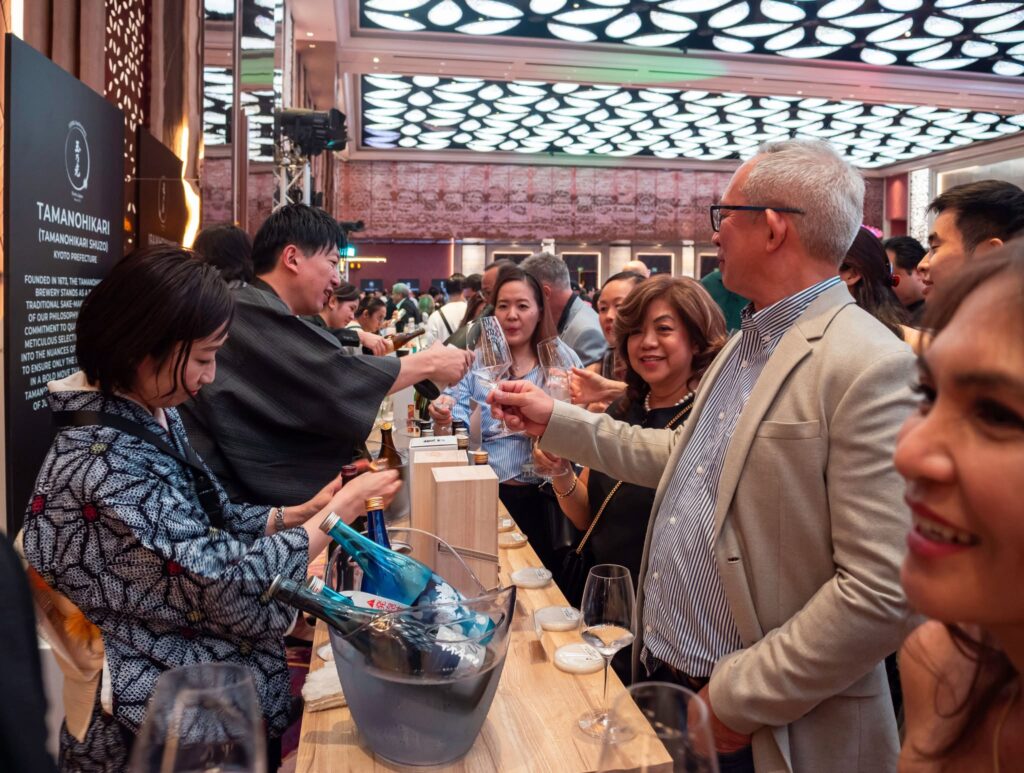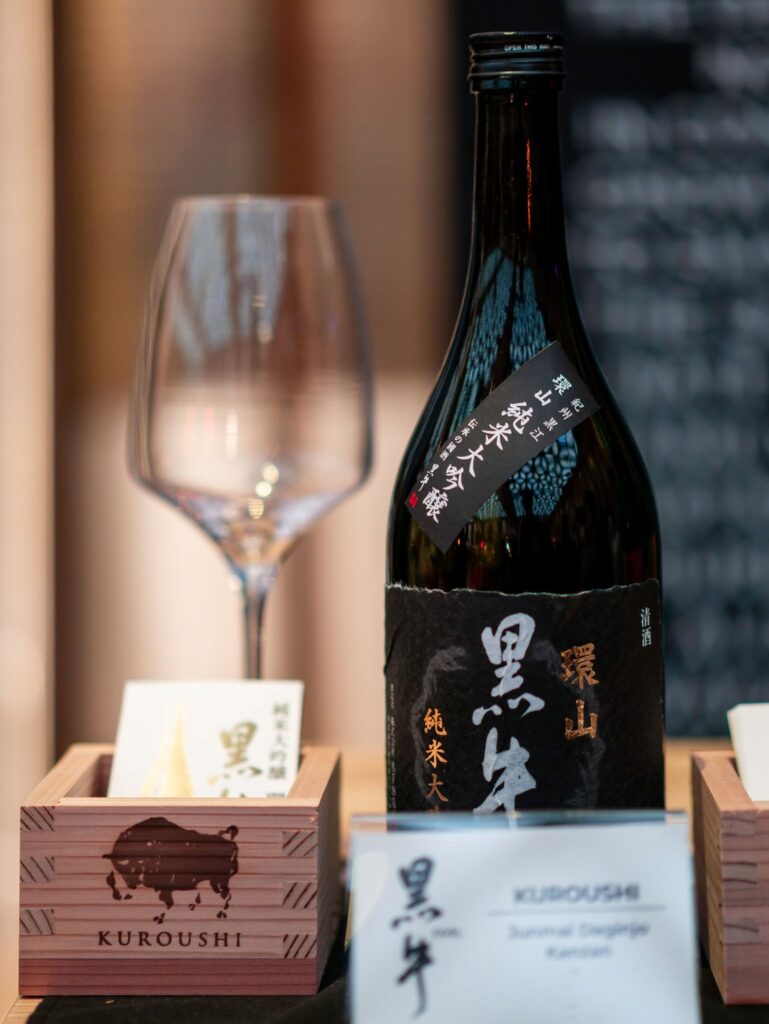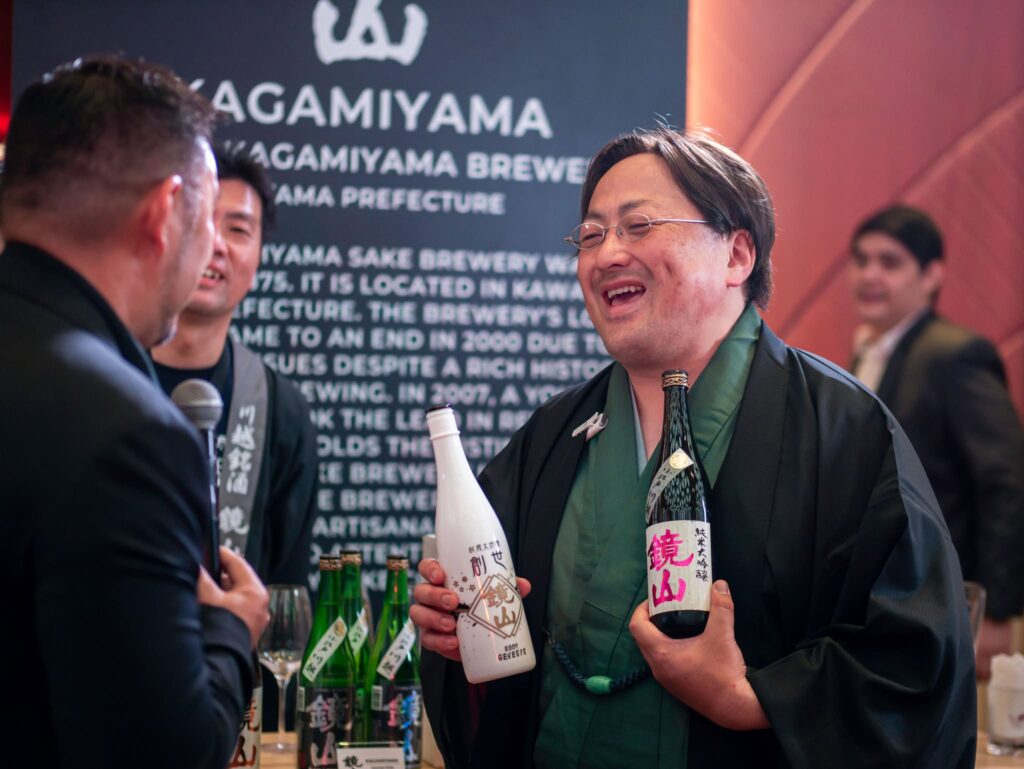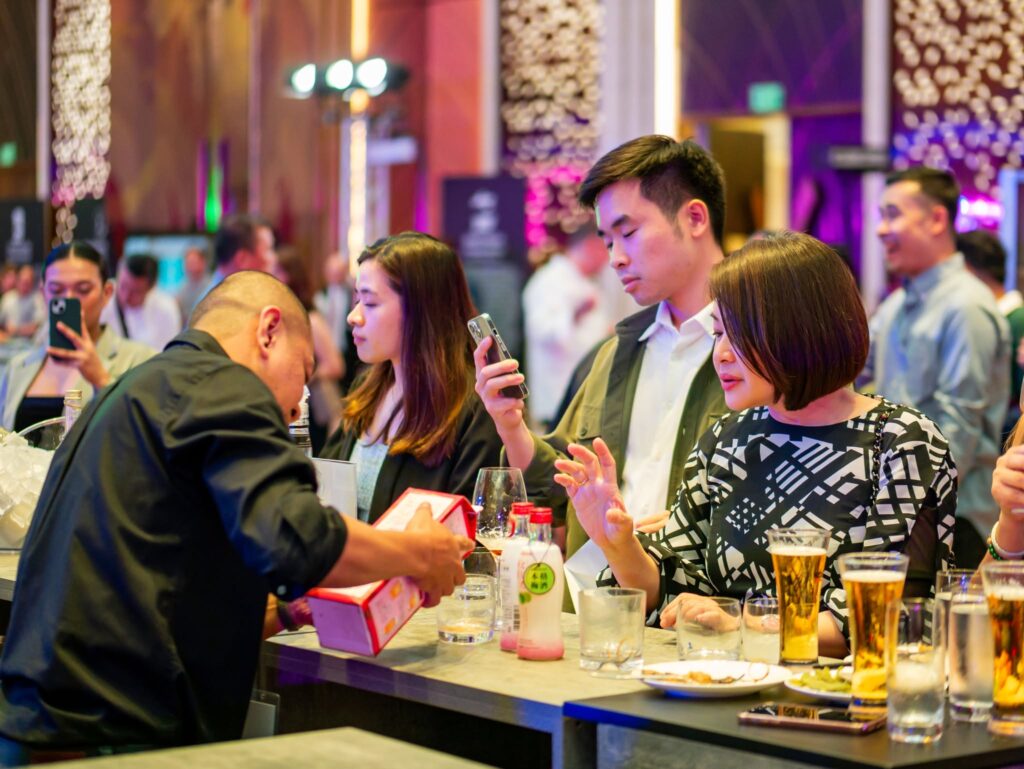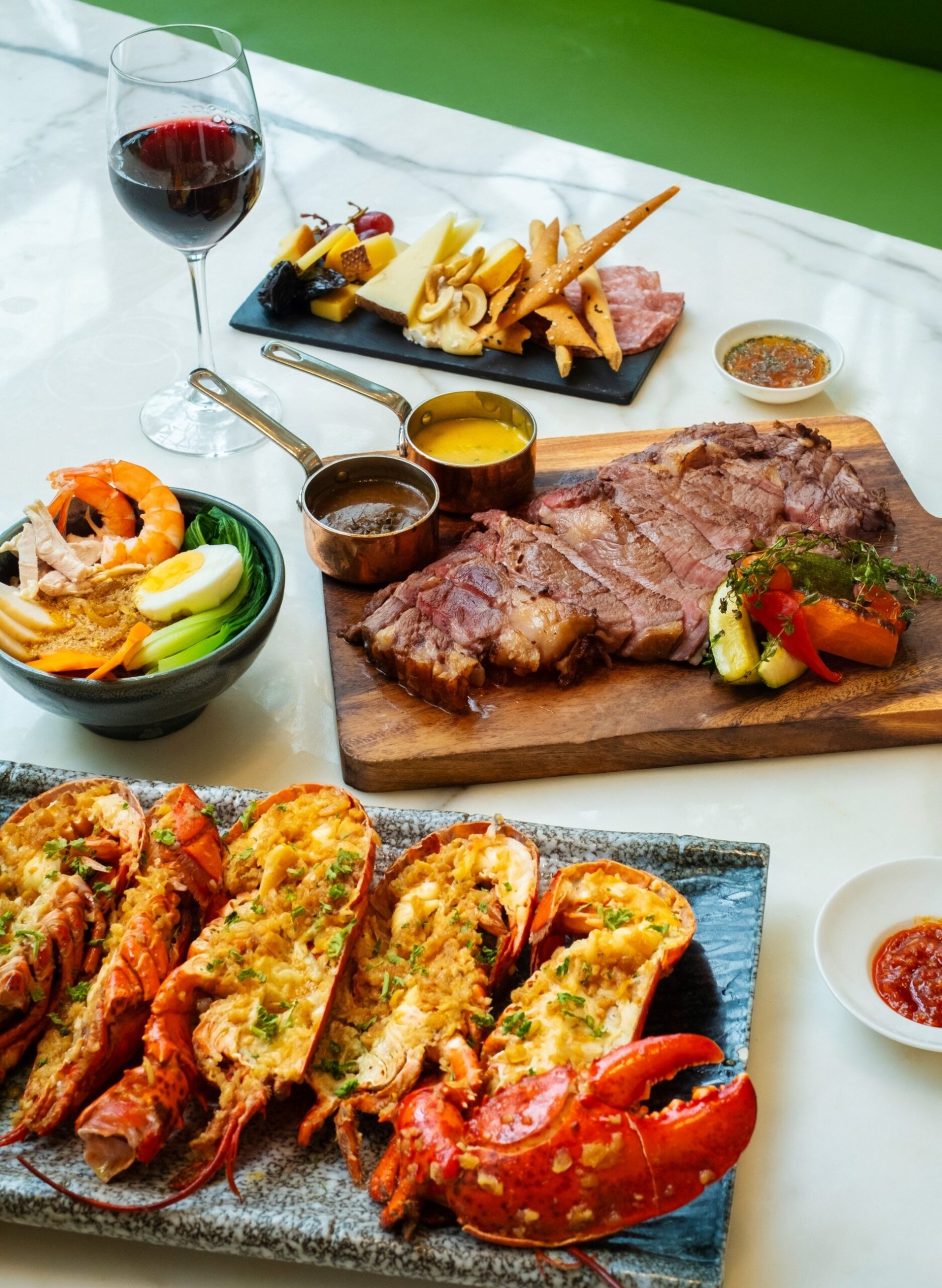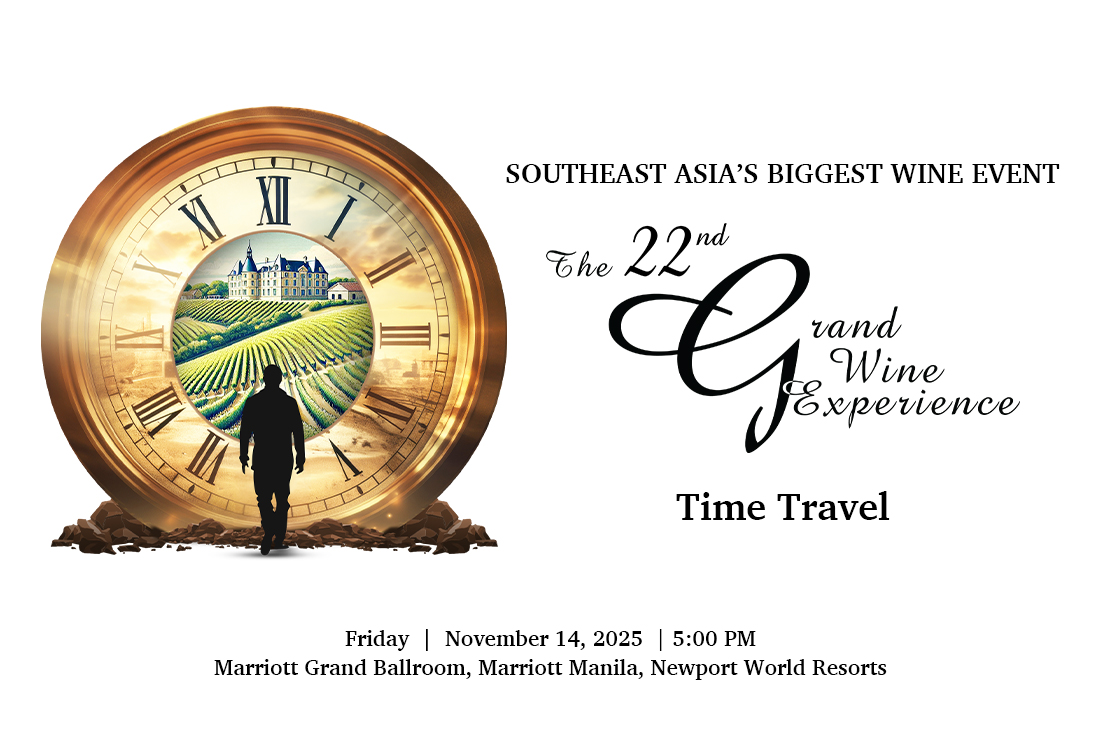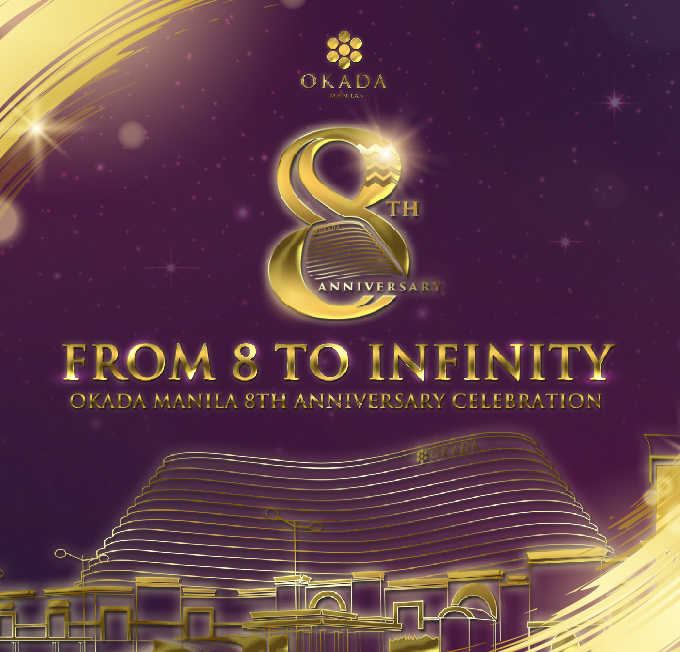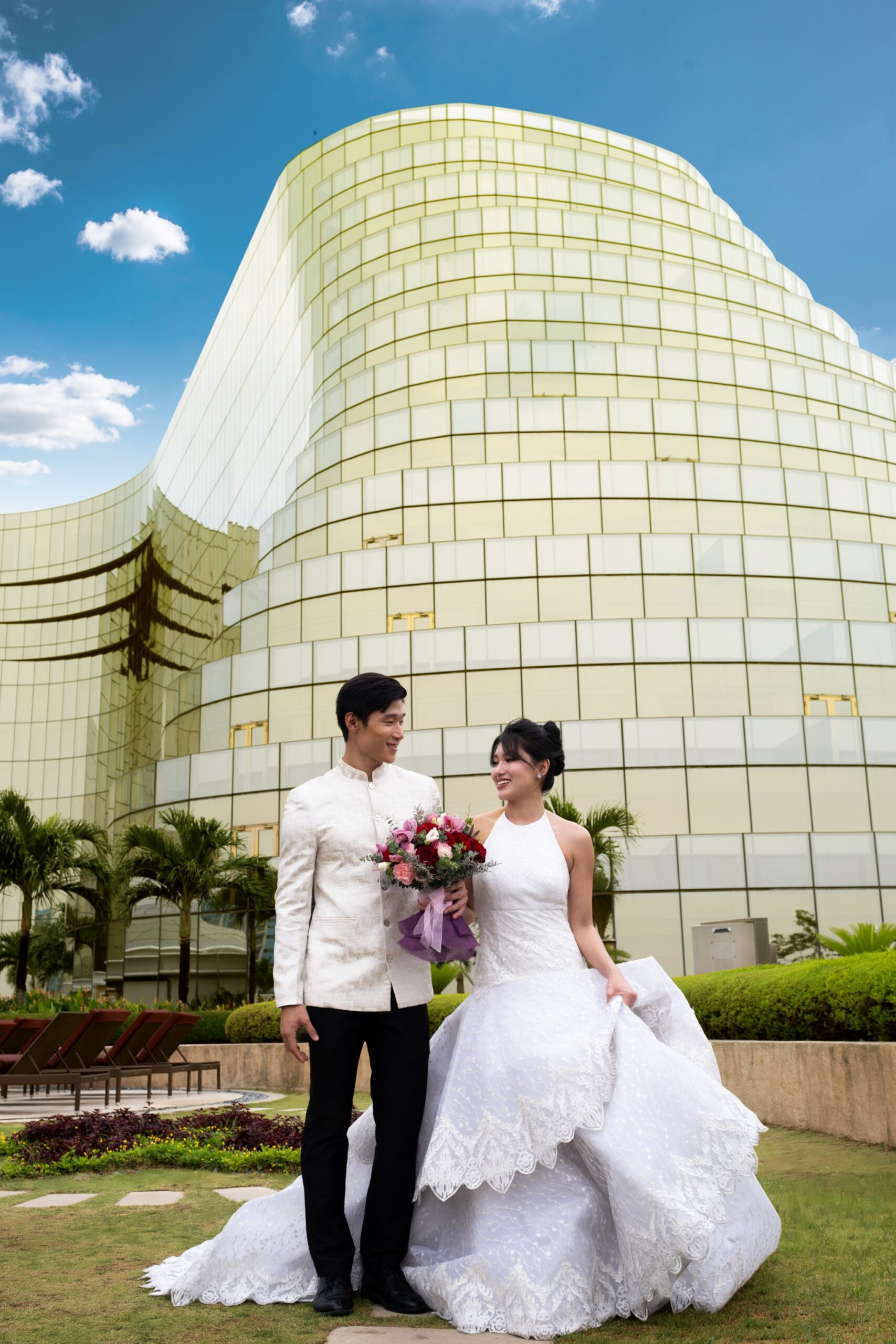The country’s first-ever Japanese sake and spirits show, hosted by Okada Manila and Philippine Wine Merchants, was a gourmand’s dream come true
Words and Images by Daniel Lazar
Okada Manila and Philippine Wine Merchants (PWM) played host to the first-ever Sake Manila, which featured what can only be described as the “bottled poetry” that is Japanese sake. Presented on May 24 at the hotel’s Grand Ballroom, the main attractions of the night, showcasing over two-hundred varieties of sake, gins, and other spirits, were complemented by a gastronomic treat, especially curated courtesy of Okada Manila’s fabulous chefs.
Featuring Japanese and Western cuisines, each dish could easily pair with any of the seemingly endless varieties of sake found on the ballroom floor. For dessert, guests were treated to delicate pastries, and other delectable sweets. Dessert also came in the form of traditional Japanese performances; taiko drum shows, traditional music, and mesmerizing Japanese dancers.
The night was officially opened with a toast by Ms. Takako Okada, joined by Mr. Raymond Joseph, Ralph Joseph, and Ronald Joseph of PWM, giving their blessings and expressing their excitement at hosting the first annual Sake Manila show. It was to be a highly educational night, highlighted by the repeated raising of one’s arm, while listening to the knowledgeable brewmasters explain their craft.
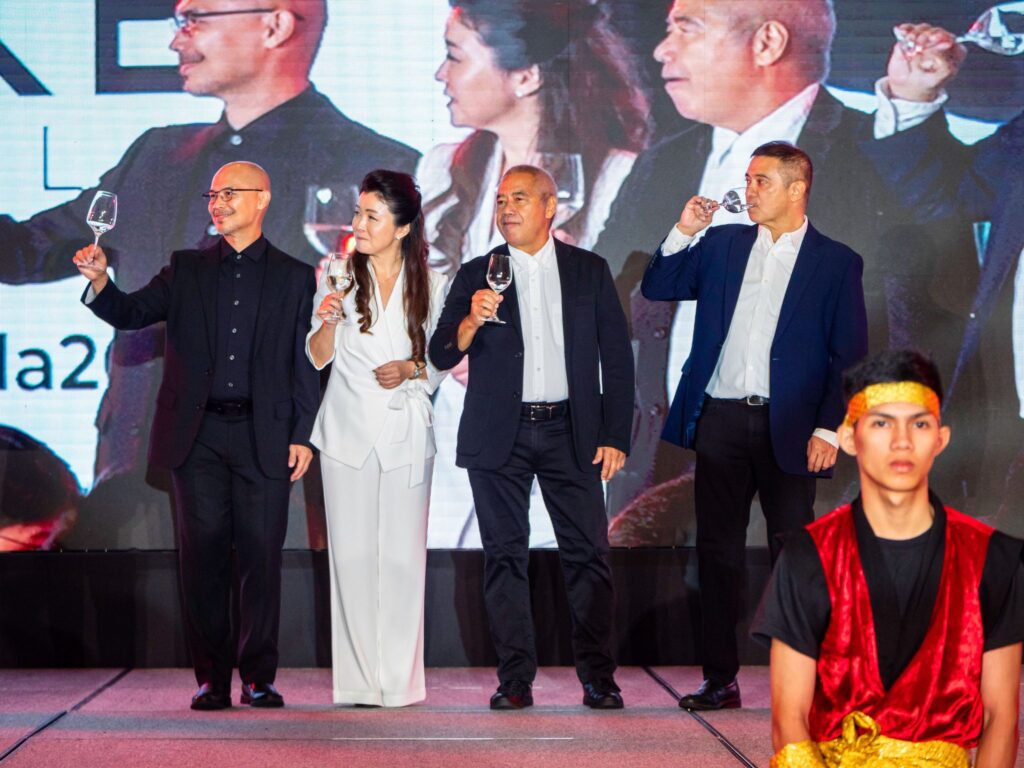
The Host with The Most
What better place to feature hundreds of years of Japanese brewing traditions in one night, than in Okada Manila’s Grand Ballroom. “I am so honoured that Okada Manila is able to host such a grand event together with Philippine Wine Merchants, and gathering all the sake breweries here in the Philippines. This is such a great night,” revealed Okada’s Vice Chairwoman, Mrs. Takako Okada excitedly, through her interpreter.
And what a night! Kicking off the festivities, Okada’s culinary team carried in a seventy-two-kilogram tuna fish to be carved right in front of the guests. Apart from showcasing their special culinary skills, chefs also served guests some of the freshest sushi, ever.
Of course, as the name implies, the main attraction at this party was the sake. Over forty distilleries showcased anywhere from three, to eight, or more different varieties of sake, each with a unique flavor, texture, and palate. In addition, several gins, an array of shōchū (a traditional Japanese distilled spirit, much like vodka), beers, wines, and dare I say it, even premium bottled hydrogen rich water. But first, to understand a little more about this fascinating beverage, let’s see what truly makes a sake.
‘Sake’ it To Me!
Similar to European wines, the terroir of a sake, which encompasses the local geography, types of ingredients, and the skill (and personality) of the brew master, will speak volumes of its aroma, texture, and taste. Japanese craftspeople are well known for their meticulous attention to detail, and rich tradition, spanning hundreds of years. Good sake is unique to each brew master and embodies their unique personality and style, much like a samurai’s sword, which is said to convey the soul and definition of its warrior.
As such, the ways in which sake is brewed in Japan have evolved, over time, much as European brewing methods, traditions, and fermentation developed over hundreds of years. What makes it unique is that it is brewed from rice; moreover, the variety of rice, the way it is milled, the freshness of the water, and the type of yeast used (there are seven main types numbered from one to seven), all come together to create a unique spirit.
While many prefectures pride themselves on their quality of rice, crystal clear mountain waters, or the type of yeast they use, premium grade sakes, or ginjo sakes, and super premium, or daiginjo, are those that are made from rice that has been polished to at least 60% of its original size. And the best rice to use for such sake is the Yamada Nishiki grain.
Chiebijin brewery is located in Oita Prefecture, one of the few areas in Japan that grows the Yamada Nishiki grain. Featuring three sakes at the show—65%, 55%, and 35% milled rice varieties—I was urged to try a progression. It was a most interesting experience, which makes one truly appreciate the flavors, textures, and aromas of each sake.
The least premium variant was not bad, but a little spiky and imposing. The 55% was better, smoother, slightly more aromatic. The last, which was a winner at the prestigious 2022 Kura Master competition in France, was sweeter, with an explosion of fruity aromas and tastes, and superb smoothness.
Executive Vice President, Rumiko Obata, of Obata Brewery, explained that the region of Sado Island, “besides being a UNESCO heritage site, is very famous for its very high-quality rice, because of the soil and soft water that flows from the mountain range.”
Surrounded by two mountains, Sado Island, located just northwest of the Japanese mainland, has some of the best and softest water in Japan. Therefore, the sakes produced there since 1892 are among the softest sakes in Japan. I tried their Manotsuro Bulzai, which is a Ginjo sake, slightly dry, sweet, and aromatic.
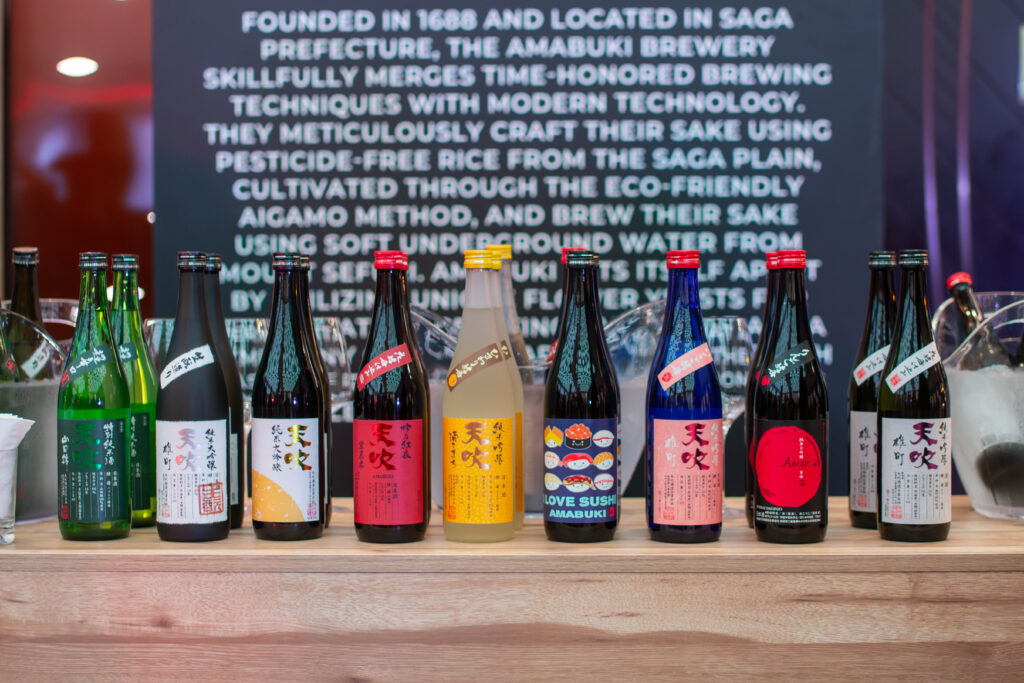
When it comes to the fermentation aspect of sake, Keith Norum of Masumi Brewery in Nagano, described how yeast is a crucial component of sake. “Masumi came up with a yeast compound, yeast No.7, which is now one of the most widely used for sake brewing in Japan.” He explained that the reason it is so widely used is because it is “very versatile and robust, and able to ferment in almost any climate, from the hot south to the freezing Hokkaido north.”
Established in 1662, Masumi was one of the oldest breweries at the show, birthed from a long line of samurai warriors. I sampled their Nango Daiginjo (or super premium sake), made with rice polished to 40%, and it was an absolute delight; incredibly smooth, calm, and fresh, with subtle fragrances.
Cold or Hot?
Another aspect of sake which came up frequently throughout the night, was “should I be drinking this chilled or warm?”
In the James Bond film “You Only Live Twice”, Bond shows off his sake acumen by knowledgeably stating to his Japanese host how his sake is “served at the correct temperature of 98.4 degrees Fahrenheit.” But is it? Was Bond just showing off? Well, yes of course, doesn’t he always? But also, no, there isn’t an easy answer, unfortunately. While it’s true that good quality sake is generally served chilled—at about the same temperature, or even lower, than white wine (about 50 degrees Fahrenheit)—certain sakes can also benefit from some heat.
Warming sake can bring out a more enhanced flavor, fuller body, and more of the umami sensation. “What’s umami?” you ask? In scientific terms it describes the tastes of glutamates, and nucleotides. Foods high in these components are tomatoes, cheese, and of course sake. So, in layman’s terms, umami is the richness of the five basic tastes, alongside sweetness, saltiness, sourness, and bitterness. When it comes to spirits, sake has two to five times more umami than wine or beer.
Conversely, chilled sake has a clean, fresh, and fragrant flavor, with less noticeable umami, and enhanced ginjo aromas. Many premium ginjo, and super premium daiginjo are full bodied and can be delightful, whether warm or chilled. Factors such as weather or the type of food pairing will determine whether sake should be warmed or chilled upon serving. Heavier, fattier food will pair better with warm sake as it helps clear the palate of oil, whereas light foods such as sushi will pair excellently with chilled sake.
Even the Kagamiyama Genesis 2007vintage sake (which goes for P 21,000 a bottle), a unique, artisanal brew from Saitama Prefecture, “can have a fuller body and stronger aroma when it is warmed,” noted brewer Akihiro Igarashi. I tried the Genesis chilled, and it was incredibly smooth, unlike any other young, fresh sake at the show. It exhibited superb smoothness, with woody, earthy tones, due to its ageing in barrels. I could imagine that when served warm, it would be stronger, with woodier tones, and enhanced richness.
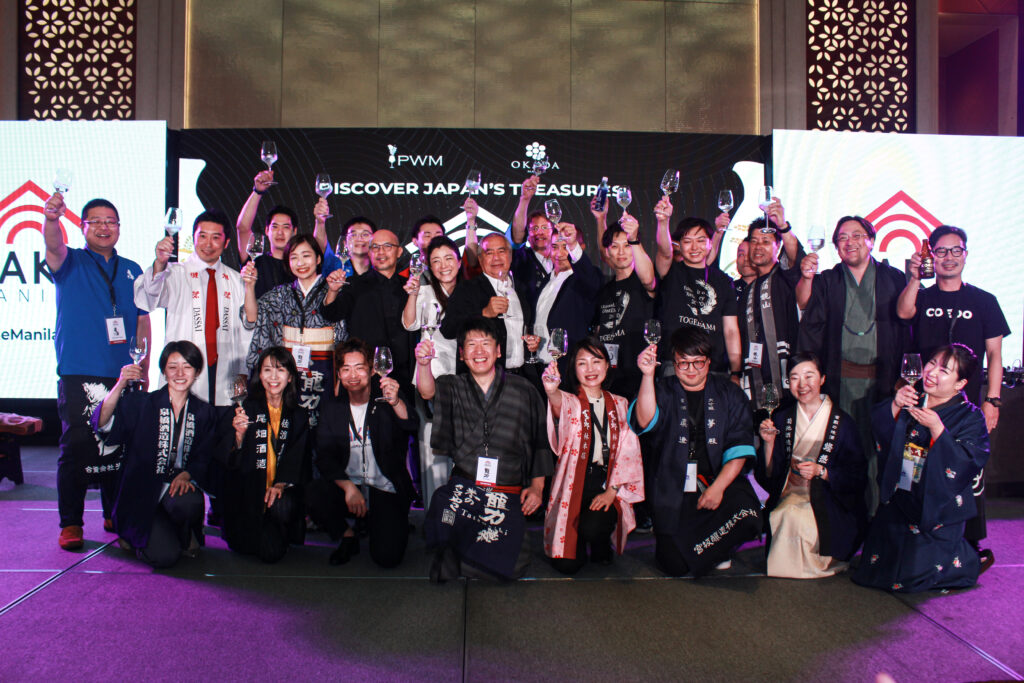
Of Exciting Things to Come
Sake is known in the Philippines, having been widely introduced in the market by PWM in 2010; to date, this Japanese delicacy has gained an even wider following in the country. However, it is still not yet as well-known as other wines and spirits.
The aim of Sake Manila is not only to attract movers and shakers, and introduce them to this magnificent drink, “but also to introduce Filipinos to something that we ourselves love and cherish,” explained Mr. Raymond Joseph, “and to grow the sake culture in the Philippines, because it’s something I fell in love with when I first visited Japan,” he continued.
Looking ahead to Sake Manila 2025, Mr. Joseph expressed his wish that it not merely be a collaboration between Okada Manila and PWM, but a full partnership, which would enable the two to bring in more breweries, and delicacies not currently available in the Philippines—and perhaps, something more.
Being deliberately mysterious, as to not ruin the surprise, Mr. Joseph would not elaborate, but hinted at “planning something special for next year’s show, which includes a full partnership with Okada Manila.”
If it’s anything like it was this year, this writer can definitely tell you that he simply cannot wait for next year.
#expatphilippines
#expatph
#sakemanila2024
#sakemanila
#sakelovers
#SakeAppreciation
#SakeFestival
#JapaneseCulture
#japanesecuisine
#philippinewinemerchants
#OkadaManila






